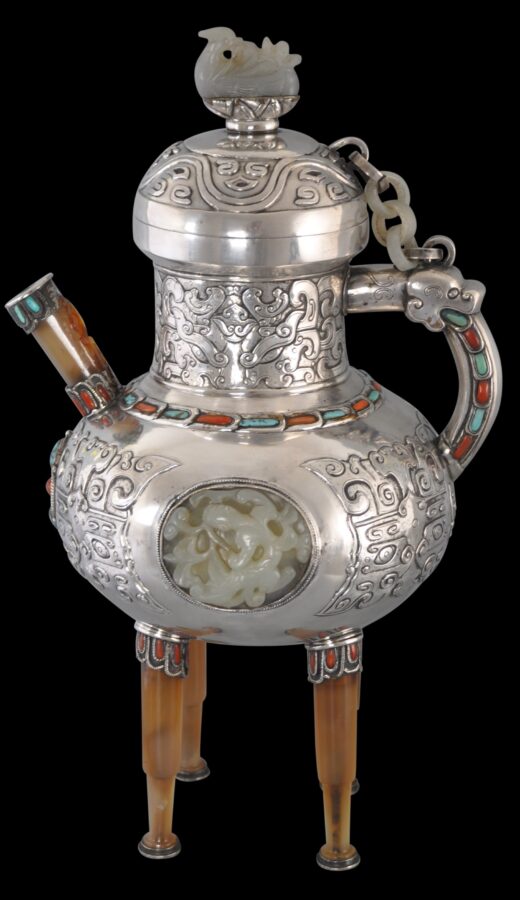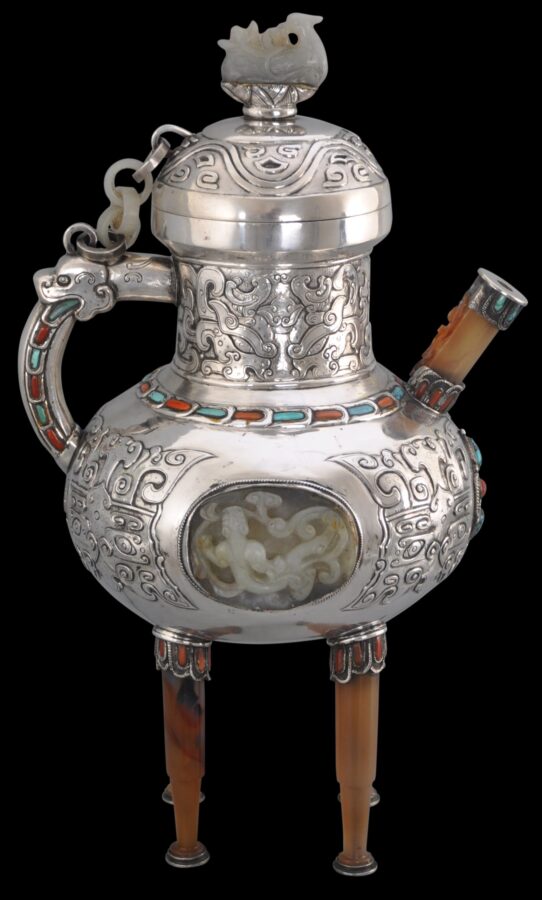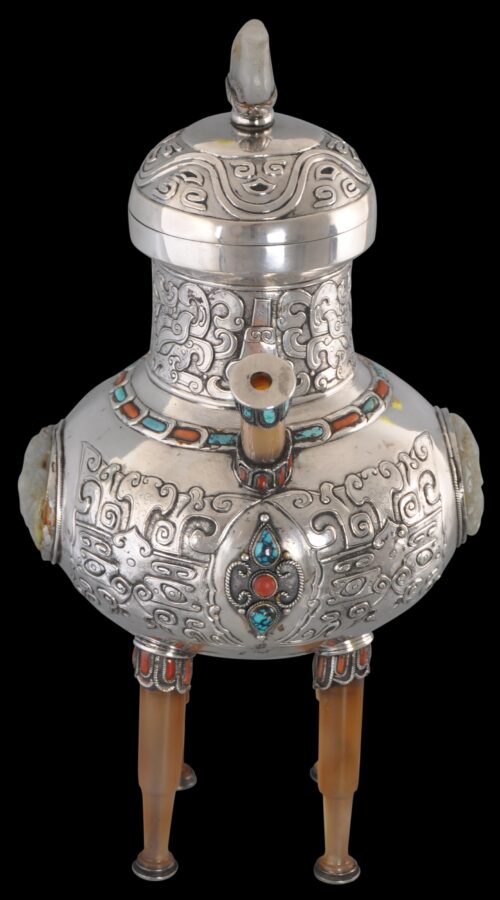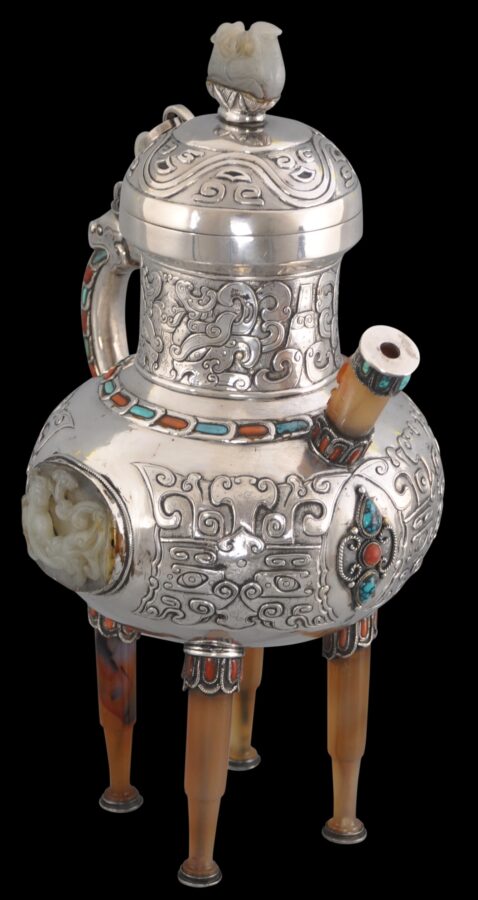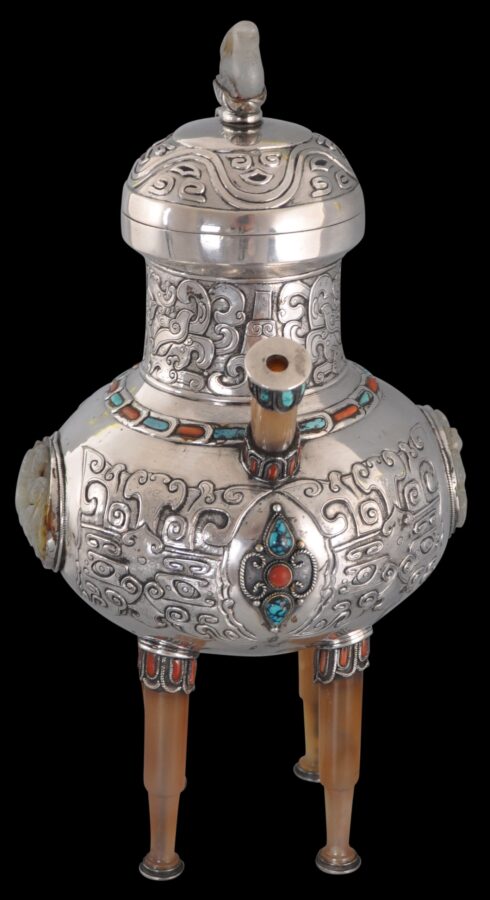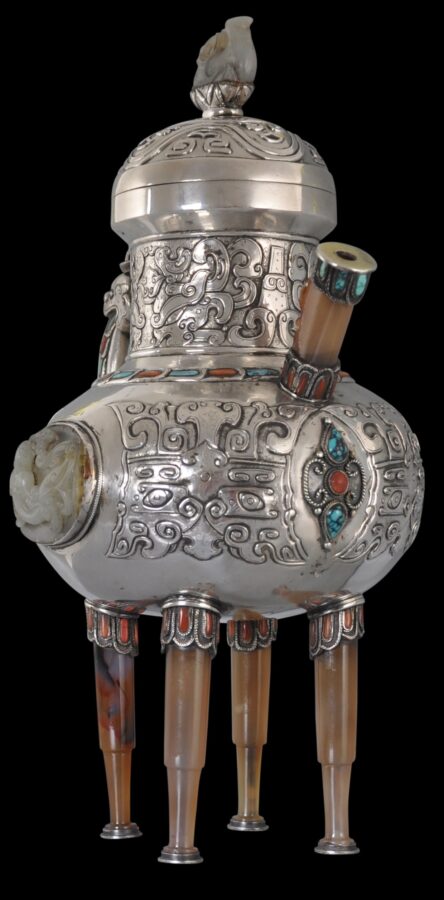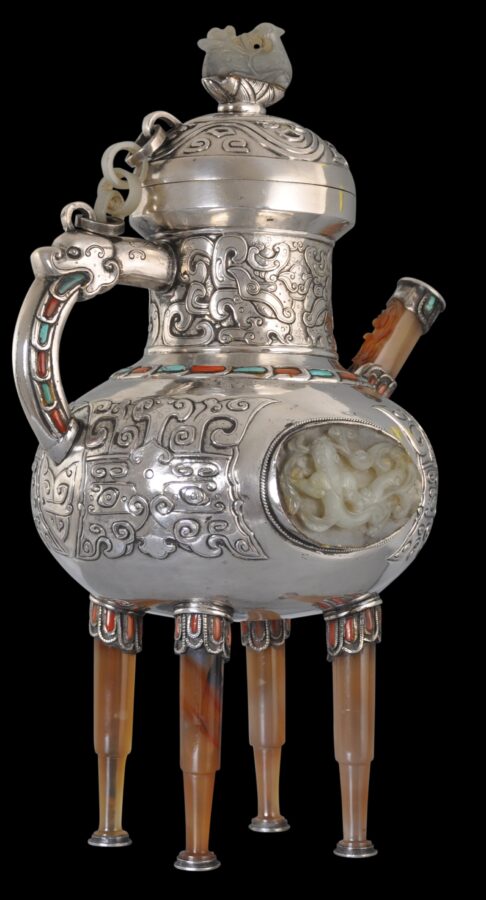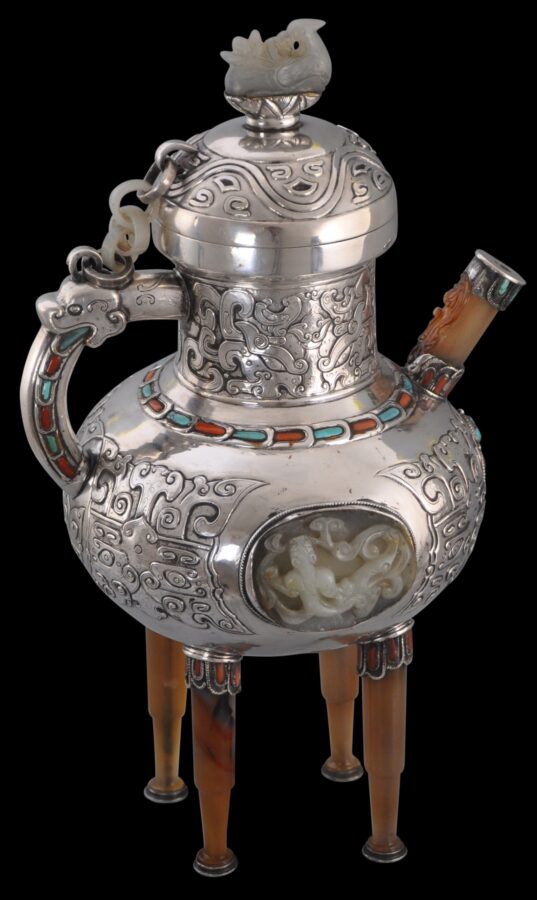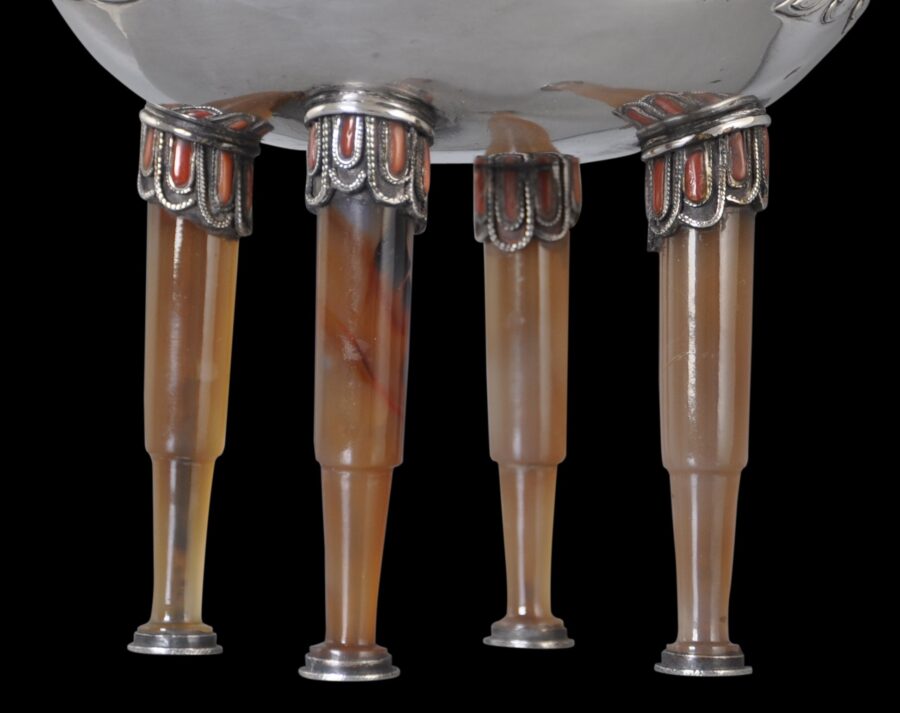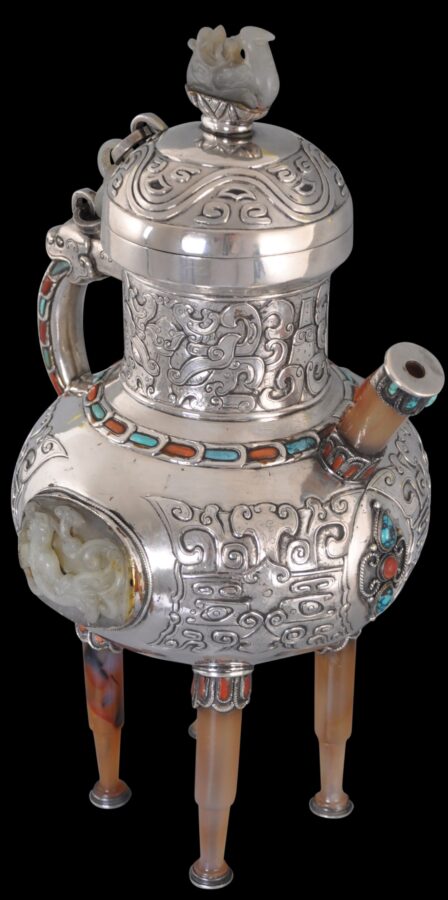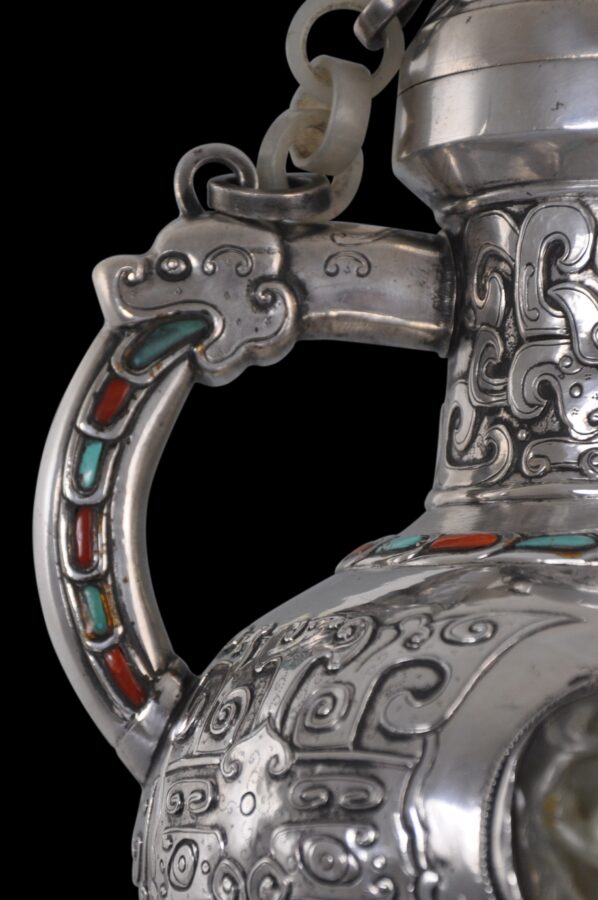This extraordinary vessel was made in either China or Mongolia in the early 20th century as an elaborate presentation piece. Made from solid silver that has been cast, hammered, chased and engraved, it incorporates earlier elements of carved jade and agate, and has been inlaid with coral and turquoise cabochons.
The form, and much of the chased decoration, is based on an archaic bronze wine vessel and cover from China’s Warring States period. Such vessels were being unearthed in China and the designs and motifs were much copied on contemporary vessels.
The vessel stands on four long, agate feet, has a spherical body, a short spout of carved agate, and a domed lid surmounted by a carved jade phoenix. Each side of the body is set with a large, carved plaque of a mythical beast amid leafy scrolls.
The shoulder of the body is inset with a band of alternating turquoise and coral plaques. The handle is shaped as a dragon head emitting a flow of alternating turquoise and coral plaques on both sides of the handle. The front of the vessel is inset with two tear-shaped turquoise cabochons on either side of a round coral cabochon. Each foot comes out of a silver collar set with coral plaques, and the spout has a silver mount at the top and bottom set with turquoise and coral plaques respectively. The lid is linked to the handle via rings carved from jade.
But most striking of all are the legs. These are actually repurposed agate or carnelian cheroot or cigarette holders probably from Yunnan. See an example here. Several of them still have the remnants of tobacco smoke staining inside. Each of these is capped on the base with a silver roundel.
Decorative objects such as this, as well as jewellery, were produced in China in the early 20th century perhaps in the aftermath of the fall of the Qing Dynasty. At that time, court silversmiths and jewellers no longer were required, and thousands of officials attached to the Court sold off their jewellery, much of which was used as part of Court dress. This created a large, secondary market in repurposed gems and jewellery, as well as items that could be broken down and reassembled into jewellery and decorative objects more suitable for foreign tastes.
The vessel here is in excellent condition. There are no losses to the inlaid stones and no replacements. The vessel sits evenly and without any rocking. The silver has good signs of age.
References
Duda, M., Four Centuries of Silver: Personal Adornment in the Qing Dynasty and After, Times Editions, 2002.
Herridge, E., Bringing Heaven to Earth: Chinese Silver Jewellery and Ornament in the Late Qing Dynasty, Ianthe Press/Paul Holberton Publishing, 2016.


